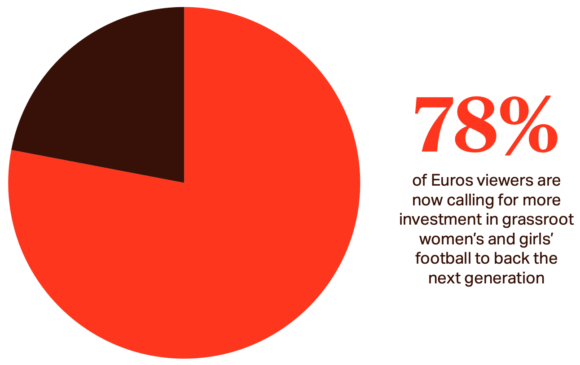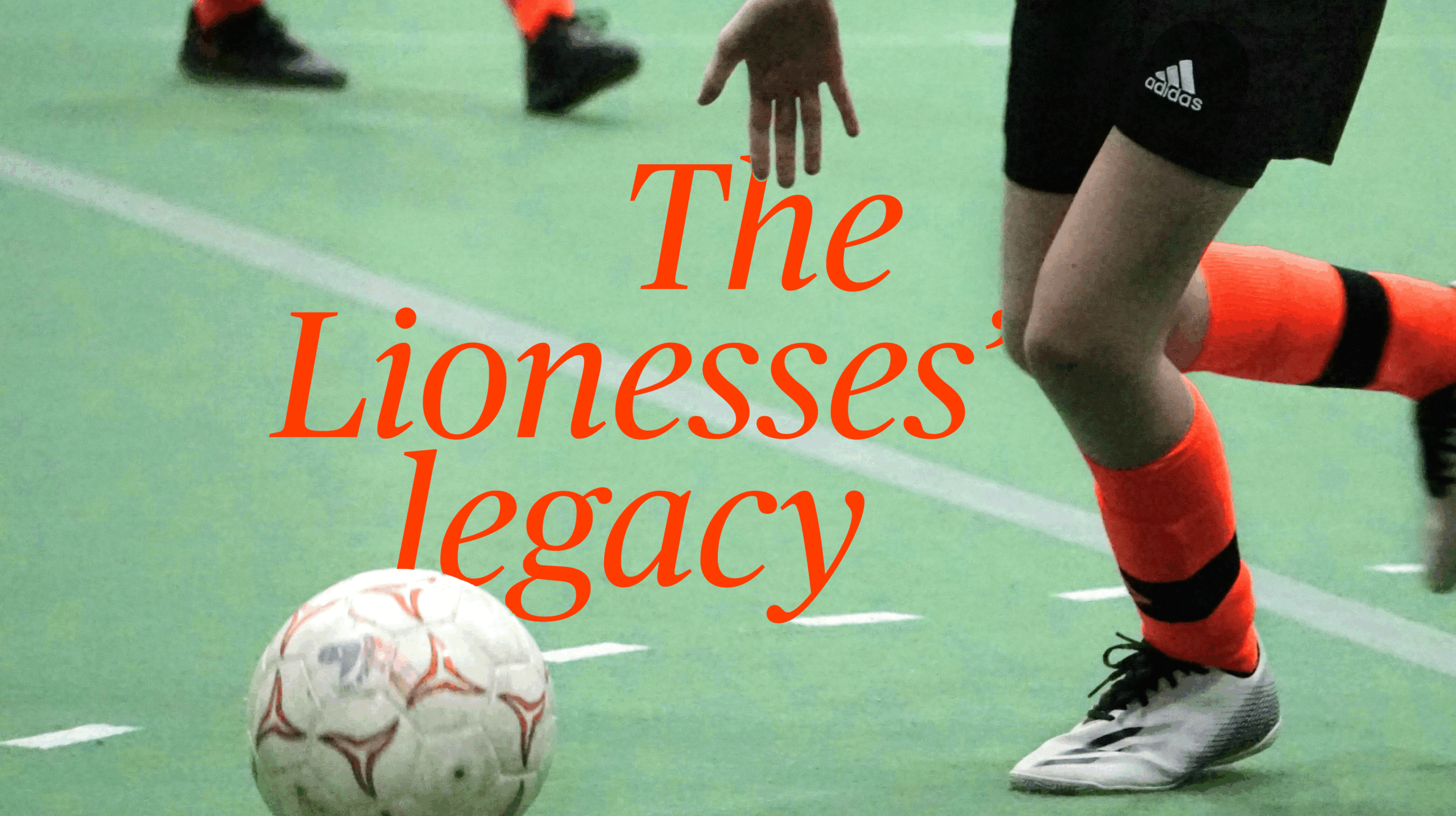When Chloe Kelly scored the winning penalty that claimed the Euro 2025 final for the Lionesses, the reaction that erupted was a roar of national pride. It also marked a milestone moment in women’s football. The Lionesses’ high-stakes win has sparked a significant shift in women’s football fandom, and this presents huge long-term opportunities for governing bodies, clubs, sponsors and partners alike – but only if harnessed the right way.

With a reported live audience of 16.2 million tuning into the final across BBC and ITV platforms (rising from the 2.6 million who tuned into the Lionesses’ first game against France), engagement in women’s football is at an all-time high. Making the most of this moment means much more than riding the media wave for immediate and short-term gain. It means understanding the true size of the opportunities and how using them in the right way could shape the long-term future of women’s football fandom and grow the women’s game itself.
Now the Lionesses are celebrated as the best in Europe, an engaged audience of women’s football fans is therefore ready and waiting for more action.
Maintaining the Lionesses’ legacy means finding ways to consistently sustain and grow this supporter base. We start by understanding the reasons why fans were so enthralled, not only by the final, but the matches played throughout the championship. Our post-tournament survey shows that those who watched the Euros agreed that the games they watched were competitive (81%) and entertaining (78%).
“In the Sweden game the intensity, the crowd, everything was superb. You see how intense the game was. It made it so special.” Male fan of the Lionesses
“Me and my sister went down to the pub to watch one of the Euros games. It was a really high goal scoring game for England. It was goal after goal. It was just a great game.” Female fan of the Lionesses
While some debate the overall standard of women’s football when compared to the men’s game, few can deny the Euros demonstrated that women’s football is captivating and competitive in its own right. Moreover, this isn’t a view that’s widely shared by those who actually tuned into the Euros. When asked if they agreed that the matches were of a high standard, almost 3 in 4 (74%) who watched the Euros this summer said yes. Even if questions around the standard of the women’s game remain for some, this is an area where governing bodies, clubs, sponsors and partners have a chance to make change happen by investing in the continued development of women’s football at all levels.
Grassroots football is the foundation of the game. Almost 4 in 5 (78%) fans we spoke to post-tournament agreed that more investment should be placed in grassroots women’s and girls’ football to ensure the standard of the game continues to improve. Half of the parents who took part in the survey and watched the Euros said the tournament had made their children want to take up football or play more than they already do. As demand grows, the priority for governing bodies must now be to expand measures that facilitate inclusive access for all who want to participate in women’s and girls’ football.
It’s equally important to do what’s necessary to maintain existing engagement and retention after this initial surge in interest. Investment in training programmes, equipment and facilities can help to meet increased demand among girls who want to get involved and ensure that those playing grassroots football today are still doing so in a decade’s time – regardless of whether they become future Lionesses or remain casual players into adulthood.

There are opportunities for clubs too. Before the Euros, we saw that support of women’s club football lagged behind engagement with the national team, with 41% of those following women’s football saying they support a women’s club team. Our pre-tournament survey results told us that a strong Lionesses’ performance would influence future engagement with the women’s game, with 1 in 4 England fans surveyed before kick-off on 2 July saying that a strong performance would impact their decision to follow women’s club football in the future. When we checked back post-tournament, this figure had grown to half of those who watched the Euros saying they are now more motivated to watch women’s club football.
This means the heat is now on for clubs to deliver for an influx of fans with high expectations set by a successful high-stakes tournament.
We already know that these fans value entertainment and competitiveness on the pitch, but for clubs to embrace this new wave of supporters they will need to understand and cater for expectations around the wider matchday experience. Women’s club football needs to ensure it provides an offering that encourages regular attendance, maintains sustained fandom and encourages fans to keep engaging with matches – even when the winter nights draw in and matches are played under December floodlights.
Finally, this is also a golden opportunity for brands, sponsors and commercial partners to play an active role in supporting women’s football to reach its full potential on and off the pitch – namely by providing authentic partnerships that truly support the growth and development of the players and the game. Of those who follow women’s sport, 88% told us they think brands should provide financial support to women’s sports. This could include supporting initiatives to help young girls get into football, which would demonstrate meaningful long-term investment in the future of the sport. The end of the Euros potentially marks the beginning of a new era for women’s football. The road ahead may be long but the buy-in is undoubtedly there, which spells huge opportunity. With the right insight and strategy, you can build confidence in this possibility. And in honouring the Lionesses’ legacy the right way, this is the moment to shape the future of women’s football for all.
